With newer cars getting bigger and heavier each year, we list the best ways you can make your car lighter in our weight reduction guide.
Reducing weight is crucial for enhancing car performance and is the cheapest of all car modifications. By shedding excess weight, you can improve speed, acceleration, and overall agility. Removing any unnecessary weight improves handling and cornering capabilities, too. But the benefits don’t end there. Removing heavy interior components also improves fuel efficiency.
Every pound or kilo matters when it comes to improving overall performance. It doesn’t matter if you’re driving the latest BMW sports saloon, or a regular Ford family station wagon, reducing the weight WILL improve its performance. Just how much weight you can lose depends on how far you want to go. Space-framing the entire chassis and replacing the whole body with carbon fiber panels will certainly result in a lightweight car, but an even lighter bank balance!
But what if we told you there was a way you could improve the performance of your car by reducing its weight without costing you a single cent?! In fact, multiple ways. And many of those are totally reversible, so you can return the car to stock when you wanted to sell it too. Of course, we’re talking about stripping the interior of your car for weight reduction.
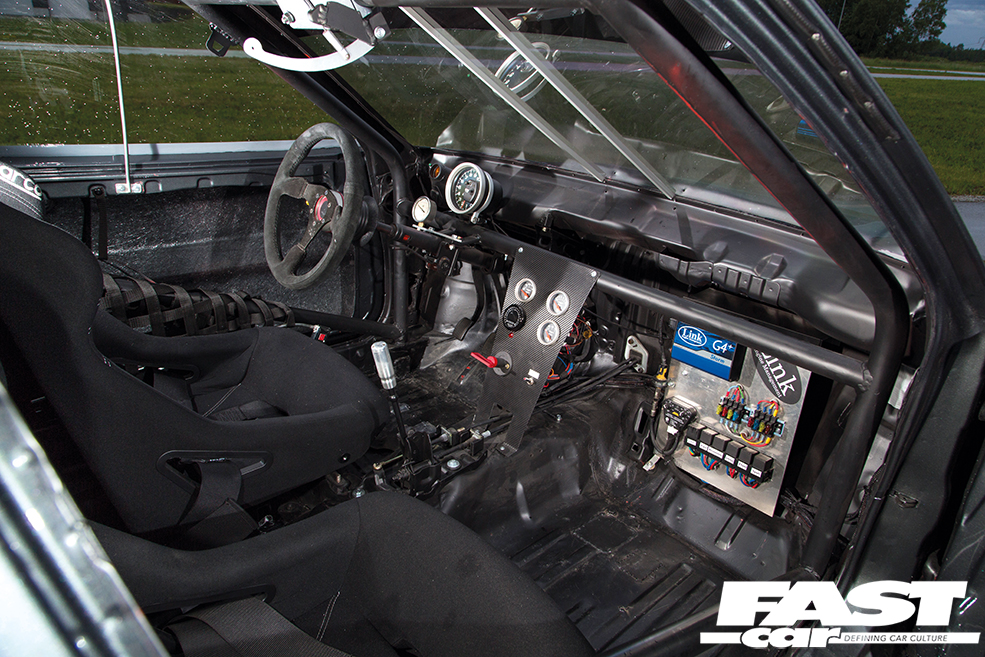
Power to weight ratio – why do I want to make my car lighter?
Power to weight ratios are everything in the pursuit of ultimate performance. They’re the reason you don’t see many race cars with 15-subs in the boot, and why a nuclear-powered oil tanker with 60,000bhp will lose off the line by my granny on her mobility scooter.
When you’re looking at weight vs power, think about this: If you’ve got a car that weighs 2000kg with 200bhp, that’s a ratio of 2000:200 or 10:1. This also means every single horsepower has to push along 10kg. If you can save 200kg in mass, the ratio becomes 9:1 – a 10-percent increase in acceleration and real-world power.
In braking terms, a small, light car has less mass to slow down and will often be able to out-brake a much larger cruiser with significantly bigger brakes. Handling improves because there’s less weight for the suspension and tires to control. And, if you’re clever, you can also influence balance, tweaking oversteer and understeer according to where you take the weight from. With less weight your car will be more reliable due to less stress on components, you’ll enhance that magical driver ‘feel’ and you’ll get more MPG too.
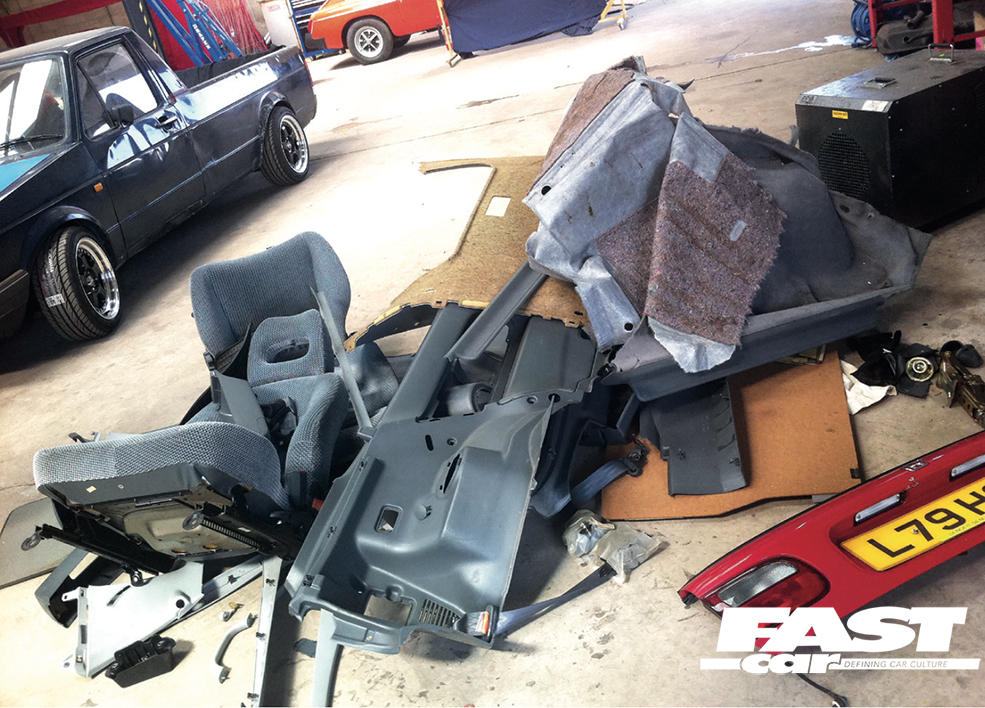
1) Remove unnecessary weight from the interior of your car
The easiest, not to mention cheapest, way of achieving car weight reduction is the most obvious – stripping out all the old guff that you don’t need. The thing to think about is how far you want to go, especially if you want to keep your car usable on the road.
Obviously the most hardcore dieting regimes, chiefly the ones where you’re looking to ditch all the trim, cut away excess metal and scrape away any sound deadening, will always yield the most impressive gains. On plenty of cars just removing the carpet can save a good few kilos for starters.
Of course, no one’s forcing you to go mad, something as simple as clearing out all the old tools and rubbish knocking around your boot can save more weight than you might think. It’s also worth knowing that the full-size spare steelies on some of the more retro Jap motors can weigh up to 15kg, while a can of Tyreweld weighs next to nothing. There’s two reasons why new cars don’t come with full-size spares nowadays – performance and economy.
Weight loss: From a few kg to a lot!
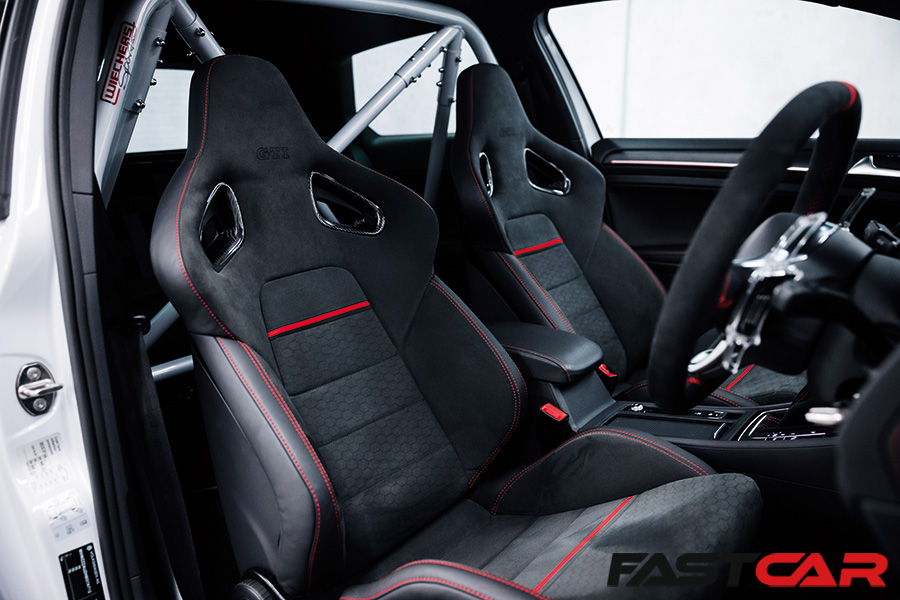
2) Bucket Seats
Standard seats weigh an absolute ton especially those big electric, heated jobs you get in the luxury VIP cruisers. In fact, many car modifiers in the US and Japan strip their seats of all the electric motors and fit manual sliders in a bid to shed a few pounds.
The average car seat can weigh 16-25kg so the best solution will always be fitting some lightweight aftermarket buckets. These are available in both reinforced fiberglass and posh composites like Kevlar and carbon fiber. Some aftermarket seats can weigh as little as 4kg and, even with the added subframes, that’s a significant drop in weight – especially if you only need the one.
When you’re making your choice don’t forget to consider that leather generally weighs more than cloth too, just try to pick up a cow sometime…
Weight loss: up to 25KG per seat
Start looking: cobra-seats.com
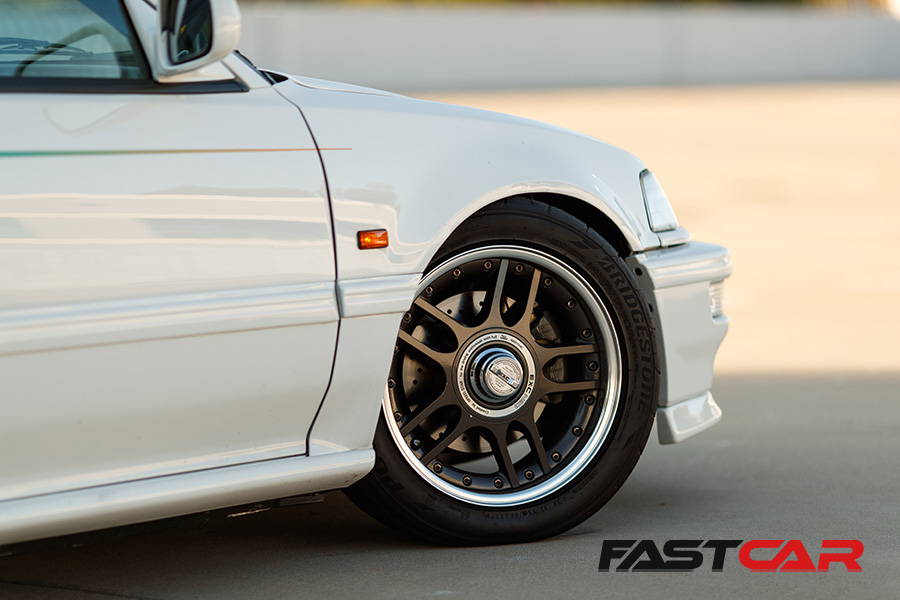
3) Lighter Alloy Wheels
Steel wheels, along with the larger sized alloys, can weigh anything up to 20kg a corner with the tires on, and that’s what’s scientifically know as ‘a lot’. Even an average set of 18-inch alloys can weigh over 12kg a corner. So, do your research and be careful of what aftermarket alloys you choose. The design, construction and materials used can have a huge impact on the overall weight. Problems are always compounded with wheels too, because when they’re rotating, this magnifies the effect of the mass. Some experts say that this can be up to 10-times the original weight and, again, that’s quite a bit of heft pulling your car around.
Obviously, budget is always a consideration here, but forged rims, along with rotary forged (flow formed) wheels will always be the ultimate in lightness over more common cast wheels. OK actually, the ultimate would be full-on carbon fiber wheels, but who’s got the cash lying around to pay 4-grand-plus per corner? We’ll just have to wait for those six little numbers to come in!
Weight loss: up to 45kg (4 wheels)
Start Looking: Best Aftermarket Alloy Wheels in 2023
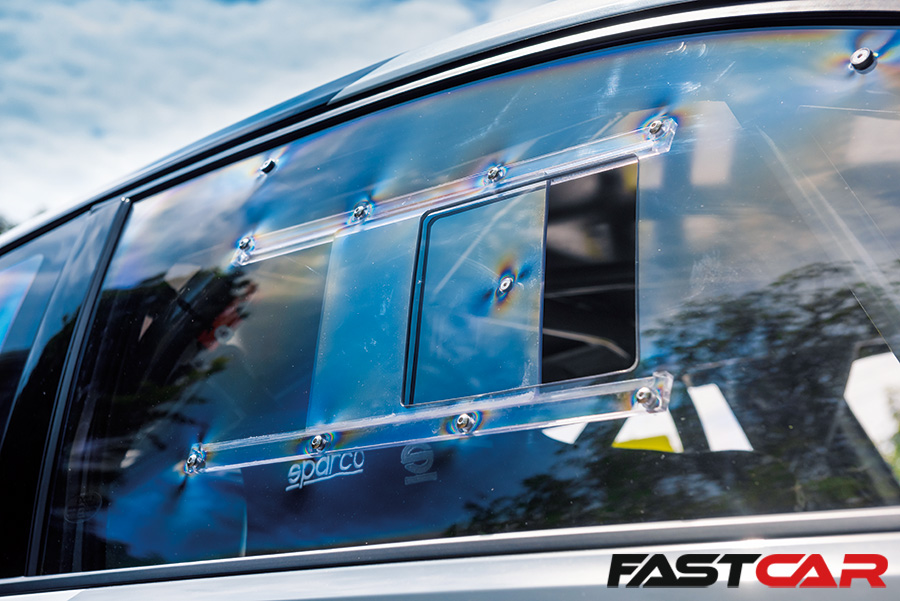
4) Plastic or poly windows for your car
Due to its complex chemical makeup, glass is a particularly heavy material – handy for seeing through when you’re driving, but heavy none the less. In fact, the glass in an average hatchback can come in at up to 50kg, and that’s why race cars use polycarbonate windows which weigh up to 60-percent less, are super-strong and are pretty much shatter proof. It’s not common with the Jap stuff of course, but in the wider motoring world, a few production cars run polycarbonate here and there. It’s not just the performance specials either, the first to do this was the Smart Fourtwo, and that was way back in 1998.
Anyway, the switch to polycarbonate windows also helps lower the center of gravity for a bonus improvement in handling, they’re also relatively cheap compared to many performance mods out there.
Everything from replacement windscreens to quarter lights are on the market and with side windows you can often specify race-car style vents and sliders. And, while you’re at it, take a look at your sunroof – you won’t believe how weighty the glass and mechanism can be there, luckily plenty of these are replaceable too.
Weight loss: up to 25kg
Start looking: acwmotorsportplastics.co.uk
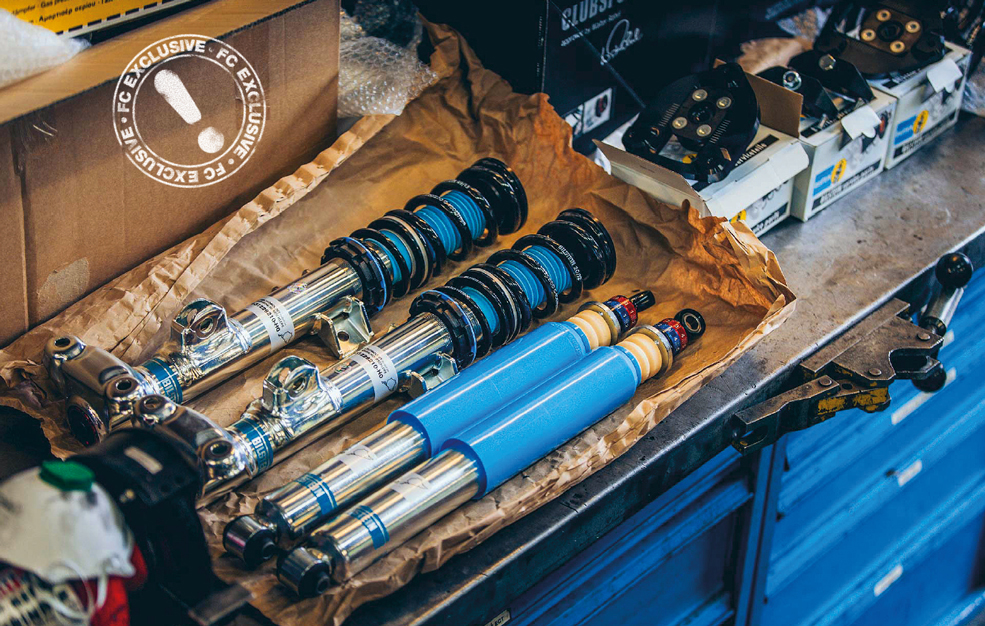
5) Chassis Upgrades – Suspension, Brakes and more
You know in The Fast and The Furious when they’re designing that orange Toyota Supra Mk4 and saying using aftermarket suspension can save 10-pounds (4.5kg) a corner? Well they were right. In fact, with the advancements in technology, the savings nowadays can be significantly more, in some cases over 10kg can be saved just by switching to a set of coilovers.
It doesn’t stop at shocks and springs either, there are loads of other chassis parts that can shave off a few kgs, sometimes a whole lot more. Lightweight adjustable control arms are also a popular choice, especially those super-hardcore alloy jobs you find on many a Honda, simply because they also do a great job of helping you set up your chassis geometry.
When it comes to your brakes, you may think that big brake conversions will always weigh a whole lot more than standard, but plenty of times that’s just not the case. Nowadays plenty of the top end items will offer quite the saving. Multi-pot alloy brake calipers and discs with alloy bells can weigh a lot less than standard cast iron jobs, and obviously, they’ll work much more effectively too. Check out our guide to the best brake pads and rotors for more advice.
Weight loss: up to 40kg
Start Looking: Best Suspension Brands in 2023.

6) Lighter Car Body Panels
Lightweight panels, particularly fiberglass replacements, have been a car weight reduction staple for decades now. In the more hardcore fraternities, it’s pretty common to totally replace front ends, or even the whole body, swapping out all the steel panels over a custom-fabricated, lightweight, tubular chassis.
Of course, we also now have the wonders that are carbon fiber and Kevlar, and everything from bonnets and tailgates, to front wings, bumpers and even complete floorpans are on offer. The best thing is that prices are coming down all the time too.
That said, always be aware of what you’re buying and, if possible, check the weight first. Some cheaper parts have reinforced steel structures or seriously thick fiberglass underneath, and that can actually be heavier than the standard part altogether. Be especially mindful of this on cars like Subarus which often come with lightweight aluminum bonnets in the first place.
Weight loss: anything up to a ton, maybe more!
Start Looking: tarmacsportz.co.uk
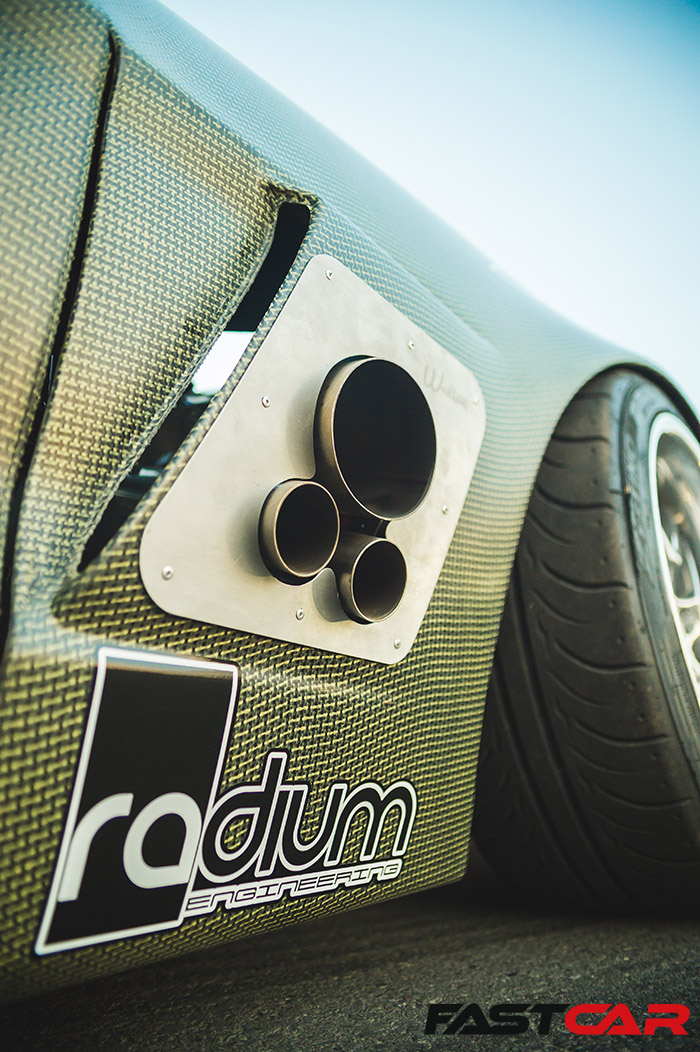
7) Lightweight Exhausts and more
When it comes to standard parts, most are made to a budget, so there’s plenty of areas where shaving off a few grams here and there can add up. Take your standard exhaust manifold, it’s most likely cast iron. A stainless steel tubular replacement will not only save a few kilos, but will improve the gas flow for more power too.
It can be a modification as small as a lightweight pulley set or racing steering wheel. Then again, it could be as bonkers as a carbon propshaft, aluminum diff or lightweight gearbox housing – it all makes a difference. We’ve even heard of people emptying their washer bottles and keeping their fuel to a minimum on a track day. It may sound crazy but it makes sense – 3 liters of washer water weighs 3kg while 40-litres of petrol nearly 30kg.
Of course, if you’re looking for the ultimate in lightweight bolt-on performance you could bag yourself a full-on titanium exhaust. Titanium is comparable to steel in strength but has less than half the overall weight. It also looks pretty damn tasty too!
Weight loss: 200grams to 20kg
Start looking: scorpoion-exhausts.co.uk

8) Get the right electricals
Obviously, most of us aren’t looking to go that far on a road car, but there are plenty of other easier options. Take your car battery for example. Normal lead-acid items are really, really heavy, but these can easily be replaced with more lightweight units, perhaps even a super-compact racing item if you’re not running too many electrical systems.
Then there’s the audio. If you like to hear your music properly, I’ve always been an advocate of a sound system with a dedicated woofer. But, it’s always worth thinking about the gear you’re fitting – do you really need that 18-inch woofer and 4000Watt amp outside of an SPL competition?
Some manufacturers have made a massive impact with lightweight audio over the past few years, and nowadays you can get some serious performance and exceptional sound quality out of tiny subs and even tinier amplifiers. Of course there’s also the age-old option of ripping out the standard system altogether, or fitting a compact Bluetooth receiver instead of a head unit. It all works.
Start looking: jlaudio.co.uk
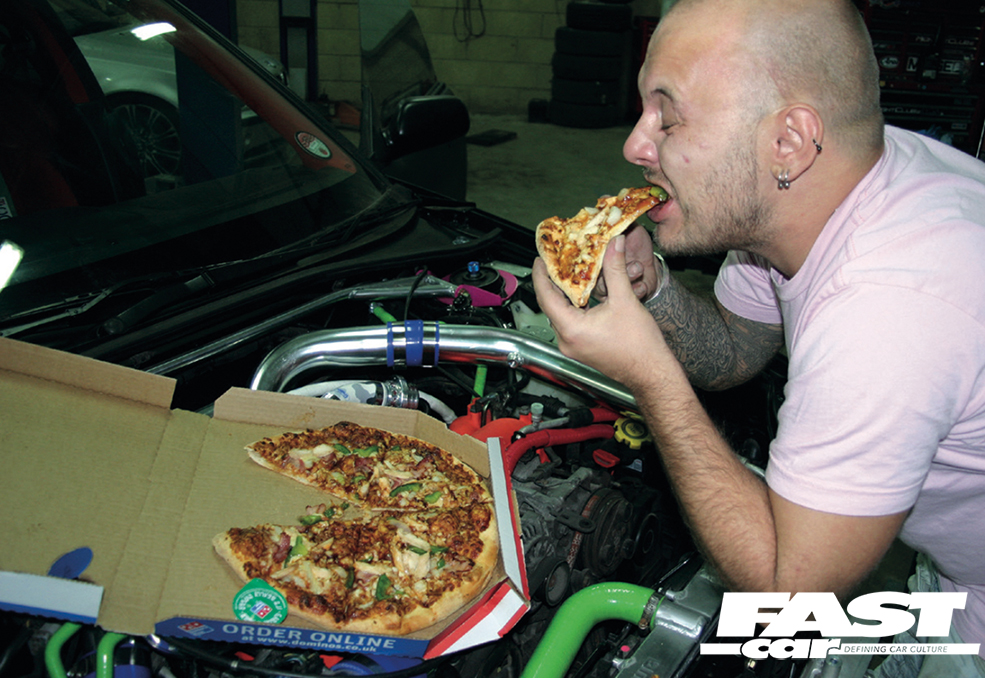
9) Step away from the fast food!
Let’s just say that one of the heaviest things in your motor is you. In other words, it’s no use trying to shave 20g off the wiring harness and immediately reaching for that second cheeseburger – take this from a rather portly, salad-dodger who knows!
If you already look like you’ve been on the cover of Men’s Fitness then well done you, but the rest of us will probably admit we could all do with being a little fitter. So, maybe getting your lap times down a bit could be your motivation to dodge a future heart attack? Then again, maybe life’s just too short for eating steamed cabbage anyway!
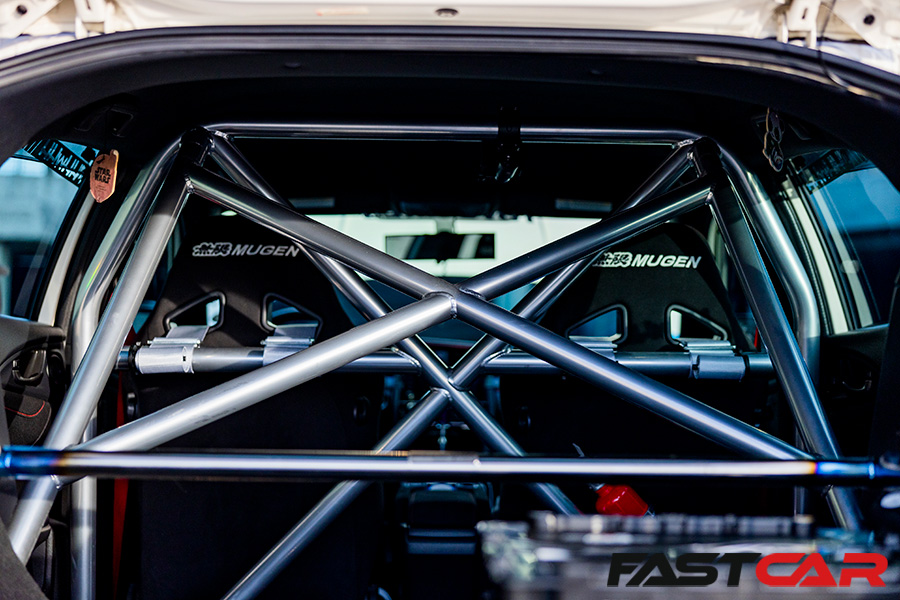
10) Don’t Add Weight With Other Modifications
Be mindful of what you’re putting back in your car – there’s pros and cons for almost everything. A roll-cage, for instance, can add a significant amount of weight but it can also save your life in a smash. Then again, with the rigidity and safety a cage provides, it’s possible to remove a whole lot more metal from the car – along with things like side impact bars.
Think of it like this, cages always look great, but racecars have to have them because of the safety regulations – some drivers would happily do without them just to get the performance edge. I know it’s a random one, but in 1952, NASCAR driver Tim Flock was disqualified from a race for having a cage made from painted wood – how’s that for a serious set of spuds, eh?
As with any other modification, it’s all about balance, so make sure you thoroughly (excuse the pun) weigh-up your options before you start pulling stuff apart.
Stripping Parts from Your Car Safely
When stripping parts from your car, it’s essential to prioritize safety – especially if dealing with the explosives in airbags and so on. Start by disconnecting the battery to avoid any electrical hazards. Use appropriate tools and techniques to ensure you don’t damage the car or its components. It’s a good idea to label and store the removed parts correctly for future use or resale. Above all else, if you’re unsure about the process, consult professional advice or tutorials to guide you through safe removal of the part.







